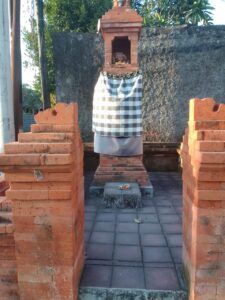What it’s like to travel around the world for CAD treatment
It's exhausting, but worth it, says this U.S. citizen who lives in Indonesia

“But I’m leavin’ on a jet plane/ Don’t know when I’ll be back again.” — John Denver
That song was running through my mind the other day.
“Zip!” I jimmied open the zipper of my carry-on to throw in my essentials for the next several days. It was time to go to the doctor, which means five long and weary days of traveling to get there. Surviving long-haul airline travel with cold agglutinin disease (CAD) — a rare autoimmune disorder in which self-targeting antibodies attack and destroy red blood cells at low temperatures — requires careful planning.
The challenge on this latest trip was how to plan for the weather in three hemispheres, as well as the environment inside the airplanes. Paying attention to such details is important when managing the symptoms of CAD.
The easy part
The first hemisphere was easy. I live in Papua, Indonesia, so I was prepared. The next stop was Sydney, Australia, where it’s springtime. My final stop was the southeastern U.S., where autumn weather can be unpredictable; it can be summer-like, tornadic, or even wintery. I packed accordingly.
The main trick is to have several layers of clothing in my carry-on. I have a scarf, a shawl, socks, a sweater, and a rather bohemian-looking leather jacket that would have been perfect in 1969, when I was a freshman in high school. My kids call me a hippie.
The airport in Sentani, Indonesia, was crammed with travelers and had no air conditioning, making it hot and humid inside. Then I boarded the plane. I immediately needed the jacket.
Next, “click, click, click!” The sound of seatbelts being removed signaled that it was time to get off the plane in Makassar, Indonesia. I leaped up as soon as it was permitted and moved to the aisle. My jacket was tied around my waist and I lumbered to the jetway for a long walk.
I had to repeatedly stop to catch my breath. “Ibu (madam), may I help you?” a nice, young lady inquired.
I should have accepted her help. When I stopped the fourth time after walking only a few yards, I decided to wait for an airline official to catch up with me. I wasn’t sure if a wheelchair would be available, but was happily surprised when one was summoned. I felt sorry for the girl pushing me, though. She was about a third of the weight of me and my carry-on luggage.
I was surprised by how out of shape I was. My leg muscles protested even the tiniest bit of walking. A layover in Bali lasted three days, but I had no time for sightseeing. I spent most of the first day in bed, groaning from the pain of my cramping legs. On the second day, I set out on foot from my friend’s house, where I was staying. I walked a block or two to a local restaurant and back. That was it.
14-hour flights are never easy
For the next leg of travel, because it was on a U.S. carrier, I had requested wheelchair assistance. I have no qualms about doing that, because the Airline Passengers with Disabilities Bill of Rights outlines passengers’ rights regarding such things.
When flying, I also try to purchase as much legroom as I can afford. Movement, especially on longer flights, is essential for keeping my blood circulating.
If I suspect a flight might be only partially sold, I book a middle seat. That way, other travelers are less likely to book a seat next to me. Unlike in more expensive seats, the armrests in the economy section can be raised. If the entire row is available, I stretch out under blankets and get some needed sleep.
I landed in Atlanta on a Thursday and spent the weekend recovering. I also suffer from motion sickness, so I need several days to stop feeling like I’m vibrating.
As this column is being published, I’m at the hematologist’s office in Alabama. Results of my bloodwork will be available 36 hours after the draw, which will determine future treatment strategies.
Temperatures and distances are the biggest challenges I face when traveling. Last week’s journey was exhausting but worthwhile. Yes, I travel around the world to manage my health.
Note: Cold Agglutinin Disease News is strictly a news and information website about the disease. It does not provide medical advice, diagnosis, or treatment. This content is not intended to be a substitute for professional medical advice, diagnosis, or treatment. Always seek the advice of your physician or other qualified health provider with any questions you may have regarding a medical condition. Never disregard professional medical advice or delay in seeking it because of something you have read on this website. The opinions expressed in this column are not those of Cold Agglutinin Disease News or its parent company, Bionews, and are intended to spark discussion about issues pertaining to cold agglutinin disease.








Leave a comment
Fill in the required fields to post. Your email address will not be published.